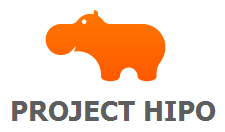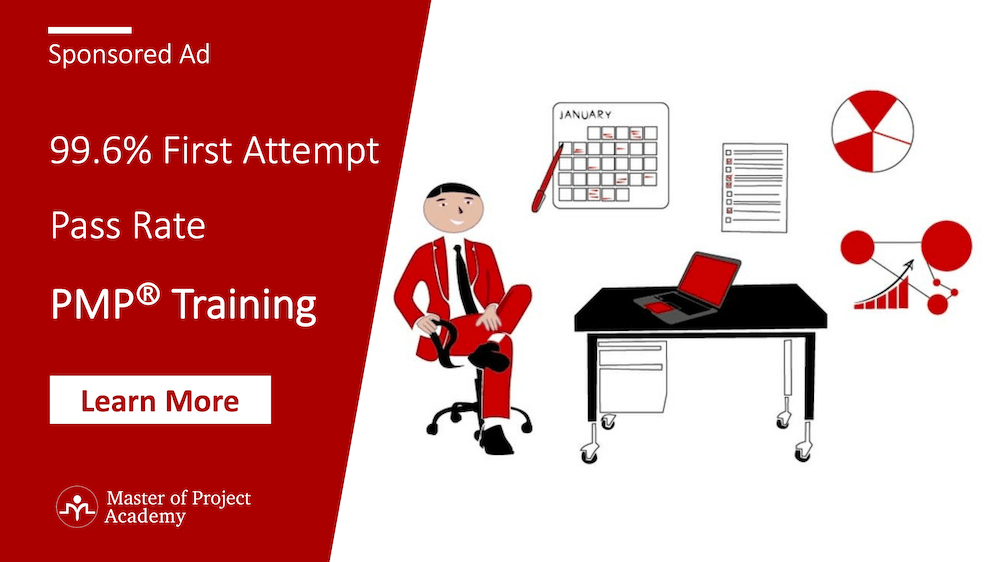Are you a project manager who is looking for growth in the career? Or do you wish to venture into project management? If the answer is yes then this is the right place to look for. These days, there are many certifications in the industry and one might get confused about which one to go for. Predominantly PMP Certification is the most popular certification in project management. In this article, I am going to provide you insight into PMP Certification. I will provide all details related to PMP certification such as Requirements, How to apply, Cost, Exam structure, Books to study, and Benefits etc which will answer all your queries and help you to decide about PMP Certification.
Content Outline of this Post:
What is the PMP Certification?
What are the PMP Certification Requirements?
How can I apply for the PMP Certification Exam?
What is the PMP Certification Cost?
What is the PMP Certification Exam Structure?
What Are the PMP Certification Knowledge Areas?
What Are the PMP Certification Exam Formulas?
How Should I Study for the PMP Exam?
How Can I Earn PMP PDUs?
When is the Next PMP Certification Exam Date?
What is the PMP Certification Exam Passing Score?
What Are the Benefits of PMP Certification?
How can I Renew PMP Certification?
What Changes in the PMP Certification Exam and When?
Conclusion
What is the PMP Certification?
Project Management Professional (PMP Certification) is the most significant and industry-recognized certification for project managers. PMP certification is truly global i.e. once you become PMP certified, you can work virtually in any industry, any location, using any methodology irrespective of any geography or domain.
PMP Certification benefits employees as well as employers. In regard to employee salary, PMP certified individuals garner a higher salary (20% higher on average) than non-certified individuals. And, in regard to employers, in the organizations having more than 1/3 of PMP certified project managers; more of the projects get completed on time, on budget and meeting original goals.
PMP Certification signifies that PMP certified individuals speak and understand the global language of project management. Further, PMP Certification connects you to a community of professionals, organizations and experts worldwide.
History of PMP Certification
It all started with ESA (Project Management Ethics, Standards and Accreditation) when a project team assignment was initiated at the suggestion of Matthew H. Parry. Matthew H. Parry served at different positions such as Chairman from 1977-1978, President 1976 and Vice President (Functional Operations) and he wanted to professionalize the project management. After 2 years, a special report on August 1983 was issued. This report mentioned that The ESA project has proposed a Code of Ethics for project management which is included in this special report.
A proposed set of topic areas that would constitute the framework for the unique body of project management knowledge and that are critical to the recognition of a project management profession was also presented. Also, the set of topic areas may serve as the basis for developing minimum standards for entry into the field, a task being worked on by PMI Certification Committee chaired by Dr. M Dean Martin. The set of topics may also serve to guide the development of the first nationally accredited Master of Science in Project Management Degree Program.
Six areas of knowledge were established: Human Resources Management, Cost Management, Time Management, Communication Management, Scope Management, and Quality Management. 26 people were listed as contributors to the ESA Report.
The PMBOK
Under the direction and guidance of R. Max Wideman, First Project Management Body of Knowledge (PMBOK) got developed. A detailed report on the development of PMBOK was mentioned in the August 1986 Special Issue of Project Management Journal.
Discussions were held at PMI ’86 and written suggestions were received till Dec 1986. Thereafter, revised drafts were approved by the PMI Board of Directors during a meeting on March 28, 1987, which became effective on 1st September 1987. This product became the basis for the development of the Project Management Professional Certification (PMP Certification) Program. Later Procurement got added in the August 1986 report and Risk Management got added prior to approval by PMI Board.
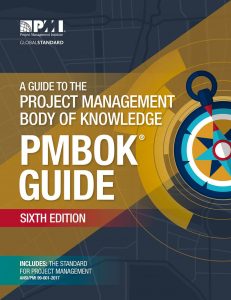
Evolution of PMP Certification
A detailed report got published in March 1984 Project Management Journal about “PMP Program: Certifying Project Managers”. This report detailed the process for becoming certified and identified 3 areas in which points could be earned towards certification i.e. Education, Experience and Service
As a result, the First Certification Examination was held on October 6, 1984, in Philadelphia.
There are currently 850,000 active PMI members and more than 750,000 active PMP credential holders globally.
What are the PMP Certification Requirements?
A project manager who meets the following requirements should apply for PMP certification:
- Lead and direct cross-functional teams to deliver projects within constraints of budget, schedule, and resources.
- Responsible for all aspects of the project for the life of a project.
- Indicate enough knowledge and experience to apply a methodology to projects that have well-defined project requirements and deliverables.
PMP Certification prerequisites are:
PMP Certification Education Requirement
An applicant should have a secondary degree i.e. high school diploma, associate degree or global equivalent
OR possess a four-year degree course
PMP Certification Experience Requirement
If an applicant has a secondary degree then he/she should have worked for 7500 hours of leading and directing projects
OR
In case an applicant has a four-year degree then he/she should have worked for 4500 hours of leading and directing projects.
35 Hours of Project Management Education or CAPM Certification
Either applicant should attend project management training for 35 hours so that he/she will get 35 contact hours (PDUs)
Or the applicant should be CAPM Certified i.e. Certified Associate in project management.
How can I apply for the PMP Certification Exam?
It takes only 3 steps to become certified. There are 3 steps to fill the application:-
Step 1. Confirm that you are eligible
First of all, make sure that you fulfil PMP Certification eligibility requirements mentioned in the above section. That means you should have an education qualification mentioned in the section ‘PMP Certification Requirement’. Then you should have attended PMP training. Further, you should possess project management experience. Once you meet all prerequisites, then you are ready to fill the form.
Step 2 Gather your info
1. Document your experience and training by gathering information about projects you have led
- Where you have worked
- Your roles and responsibilities
- Duration of projects
2. The training you have completed
- Institutions attended
- Courses Completed
- Qualifying hours
Step 3: You need a PMI.org account to start filling the application form. You can save the application and can collect the required information as you go forward.
PMP Certification Exam application is easy but it is quite tedious and time-consuming since it asks for lots of information which may take some time.
There are 2 ways to fill out the form i.e. Online and Paper application.

PMP Certification Online Application
The application form has 3 sections.
The first section asks for general information. The second section asks for project management experience. And the last section asks for 35 Contact hours earned by attending project management education.
- You need to fill the following information in the online application form which will guide you through the process
- Contact Information: Email, Address, Phone Number
- Education attained: School Attended, Level of Education Attained, Degree Date
- Domain Experience: Details of the projects, programs, and portfolios you have worked on. You should include qualifying hours, dates of employment, role, organization details, reference and experience summary
- Domain Education: Names of courses completed, institutions attended, dates and qualifying hours
Once you start filling the application, it remains active for 90 days.
PMP Certification Paper Application
Another way to fill the application form of PMP Certification is paper application. Hence this is an offline mode here, you have to send your application through courier. The application form is similar to the one discussed above.
PMP Certification Application Review Process
- When PMI receives the application, they confirm that you meet the eligibility criteria, your experience and education is valid and consistent with the guidelines stated in certification handbook
- Typically application review period will take 5-10 days.
- A number of applications are randomly chosen for audit. PMI conducts application audits to confirm the experience and education documented on certification applications.
Payment
- Once PMI notifies that the application is approved. Now it is time to make payment via an online system.
- After that PMI receives the payment, PMI emails you the eligibility number that you can use to schedule your test appointment. This is valid for one year and you may take the exam up to 3 times during the year.
Schedule Test Appointment
You can schedule your exam appointment online or by telephone using eligibility code and scheduling instructions provided by PMI via email.
What is the PMP Certification Cost?
Of course, the cost is a vital component of PMP certification. Generally, we tend to include PMP Certification training and PMP certification exam fees and we forget the cost of time to be spent on studying for the preparation of the PMP exam.
Hence PMP Certification cost includes 3 costs i.e. Cost of PMP Certification Training + Cost of PMP Certification Exam + Cost of time spent in preparation for PMP exam.
1. PMP Certification Training Cost
One of the prerequisites to appear for the PMP Certification exam is to attend at least 35 hours of project management training. You can attend this training in a training institute which can provide you 35 PDUs or 35 Contact hours.
Now that we are talking about PMP certification training cost, it depends upon whether you wish to take an online PMP certification course or a PMP certification course with a classroom format.
PMP Certification Classroom training cost may vary depending upon the country and place where you wish to attend. Generally, it ranges from 450 USD to 2100 USD. There is no fixed cost for the training.
Whereas the PMP Certification online course price will be less as compared to the PMP certification classroom training price. Online PMP certification training price ranges from 200 USD to 600 USD.
In PMP certification online mode, there are 2 modes:
- Online learning
- Instructor-led PMP training
PMP certification Online learning mode is a self-paced mode. Here you have the flexibility to attend the training program at your pace, location and convenient timings
Whereas in PMP certification Instructor-led training mode, you have the flexibility to attend from any location. However, you have to be present as per time slots of availability of instructor for the PMP course.
If we talk about PMP Certification instructor-led training cost, then it ranges from 750 USD to 3600 USD
You can read our Top 10 PMP Training post to see all PMP training options and ratings.
2- PMP Certification Exam Fee
Second cost is the PMP certification exam fee. After you have fulfilled the criteria of 35 Contact Hours, now you have to fill the application form. Once your application is accepted, you need to make the payment of the PMP Certification Exam.
If you are a PMI member then the PMP certification exam fee is 405 USD else you need to pay 555 USD.
And to become a PMI member, membership fees are as follows:
| S.NO | PMI Membership Fee | Price in USD |
| 1 | One time Application Fee | 10 |
| 2 | Membership Fee | 129 |
The duration of PMI membership is 1 year. Moreover, you get access to unlimited resources and webinars and materials at the PMI website.
As you can see above, it is advantageous to go for PMI membership and then to appear for the exam. Because you get the double benefit of saving money and access to unlimited PMP certification resources at the PMI website.
Likewise, you save money in the re-examination fee in case you fail the exam in the first attempt. Because the cost of the PMP certification re-examination fee is less for PMI members than non-PMI members.
| S.No | PMP Exam | PMI Member | Non-PMI Member |
| 1 | First Time | 405 USD | 555 USD |
| 2 | Re-Examination | 275 USD | 375 USD |
3- PMP Certification Exam Preparation Time
Last but not least, the PMP Certification cost includes the cost of preparation time. This entirely depends on an individual’s project management background, experience and dedicated time to prepare for the PMP certification exam.
If you are a working professional then you can take 3-4 months’ target time and you need to spend studying 3-4 hours each day to prepare for the exam. In other words, if you cannot spare these many hours in a day then you can extend the months accordingly.
You must be coming across many training institutes with courses as “Pass PMP exam in 30 days” or “Crash PMP course in 30 days”. This is not an impossible target but even not an easy one. Because it will entirely depend upon the 3 factors i.e. background, experience in project management and time that can be devoted to the preparation of the PMP certification exam. However, this is possible in a reverse manner. This means that you have already prepared for the PMP examination in 2-3 months. Now as a final step for revision or clarification of queries, you are attending a PMP certification training as the last step before appearing for the PMP certification exam.

What is the PMP Certification Exam Structure?
PMP Certification exam has 200 multiple-choice questions and out of these 200 questions, 25 are pretest questions. This means that they will place these questions randomly in exam but they won’t score them. But the irony is that you need to attend all 200 questions with the same sincerity. Because you might not get to know which these questions are and where they are placed in the exam. The purpose of these pretest questions is to test the validity of future examinations.
As we know that there are 5 phases in a project i.e. Initiating, Planning, Executing, Monitoring and Controlling and Closing. Hereby, the distribution of PMP certification exam questions is throughout these phases along with domain professional conduct and code of ethics.
Earlier there was a separate domain of Professional conduct and code of ethics in the exam. But now PMI has distributed questions pertaining to this domain uniformly among the five domains.
The Duration
Now coming to the duration of the exam, it is 4 hours. There is no break scheduled in between. This doesn’t mean that you cannot take any break. But this break time will be counted in your 4 hours exam time only. In other words, just keep in mind that the clock is ticking and will continue to count down even if you are on break.
Besides, before starting the exam, you will be shown an awareness session. This session will explain the navigation through the exam like how to select the answer, how to mark the question for later review, how to navigate later to the marked questions etc. Duration of this session is 15 minutes. Point to note is that you are not allowed to make any notes during this duration.
These 15 minutes duration is not part of 4 hours PMP Exam duration.
Here you will find a table referring the PMP certification exam questions distribution phase-wise
| S.No | Process Group | Percentage of Questions |
| 1 | Initiating | 13% |
| 2 | Planning | 24% |
| 3 | Executing | 31% |
| 4 | Monitoring & Controlling | 25% |
| 5 | Closing | 7% |
| Total | 100% |
This is with reference to the latest PMP exam content outline updated on June 2015 and the PMP handbook updated on 1st Apr 2019.
Sample PMP question
Question: The project manager meets with the project team to review the lesson learned from previous projects. In what activity is the team involved?
- Manage Performance
- Identify Scope
- Identify Risk
- Project team status meeting
The correct answer is C i.e. Identify Risk
Should I Use Any PMP Book in My Study?
PMP certification is not an easy nut to crack. In fact, it requires a thorough understanding of the subject and concept. There are many books available in the market to understand the content in detail. But there is no single book that covers the entire subject. Hence you need to choose a combination of books to prepare for PMP certification.
Should I use PMBOK in my PMP Study?
PMBOK is considered the main reference guide for the preparation of PMP certification. However, it is not easy to follow. But it is the foundation of PMP certification training material used across the globe.
PMBOK Guide is an exhaustive book. But it is written in such a way that it can be used with the intention of using it during implementation. However, if we focus only on PMP certification then it is not mandatory to use it. But you can use this book in combination with other PMP Study books to prepare for the PMP certification exam.
Salient Features of PMBOK Guide are:
- PMBOK Guide is the basis for the certification exam to qualify Project Management Professional i.e. PMP Certification
- It is a collection of best practices, standards, and procedure for project management
- Experts consider this book as a bible for project managers.
- PMI originally published PMBOK in 1996.
- Currently, the latest version is PMBOK 6th edition. PMI released on September 2017
- Every 3 to 5 years, PMI releases a new version.
- PMBOK guide offers extensive coverage of project management knowledge areas, process groups, inputs, and outputs.
- This book has been prepared by many experts across the globe
Cons of PMBOK Guide:
- This book lacks clarity and readability
- PMBOK guide is just like a reference book
- It doesn’t have any tips and tricks to prepare for PMP exam
- PMBOK guide doesn’t have sample questions to practice at the end of each chapter
Should I use any PMP Prep Book in my PMP Study?
There are different ways to prepare for PMP Certification like reading online material, using flashcards, learning online via self-paced, studying books, etc.
If you are a person who is into studying through books, you can certainly try any of the following books along with PMBOK
1- PMP Exam Prep Book by Master of Project Academy

We will list a sponsored PMP prep book as the first PMP book in this list from Master of Project Academy PMP Training provider. However, we do not review our book to provide an unbiased review of all available PMP books. We have just listed the features and strengths of our PMP book.
After helping 125,000+ professionals to pass their PMP certification exam with a 99.6% first attempt pass rate, Master of Project Academy has published this PMP prep book. Majority of the PMP books in the market cover theoretical project management knowledge with outdated teaching style. The unique aspect of this PMP book compared to other PMP books in the market is PMP® Prep Book by Master of Project Academy content has been organized like a real project.
While learning PMP exam content, you will be able to see the practical implications of theoretical knowledge and this will help you to grasp the details of PMP exam content easily. PMP Prep Book by Master of Project Academy will help you to pass PMP exam in your first attempt.
Unique features of the PMP® Prep Book by Master of Project Academy are:
– Real-life project examples
– 100+ Must-to-Remember Master Points for the PMP® Exam
– 100+ Flash Cards – Mapping Practice for important concepts
– 500+ PMP® Practice Questions – Answers & Detailed Rationales
– 550+ Pages PMP eBook PDF downloadable right after your purchase!
Besides, unlike the other PMP book providers, Master of Project Academy provides a sample free PMP book for you to review the PMP Prep Book before your purchase.
2- Rita Mulcahy’s PMP Certification Preparation
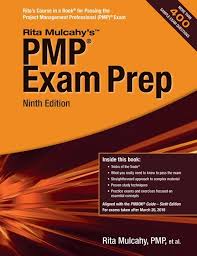
- This is the best seller book for PMP Certification
- The first edition of Rita Mulcahy was published in 1990.
- Latest edition i.e. 9th edition got published in 2018
- It conveys all relevant Exam content in a focused and simplified manner
- Every chapter has numerous questions to practice
- There are lots of tips and tricks from PMP test takers which help new aspirants to prepare for PMP certification
- It is a real PMP guide which is easy to access
- A straightforward approach to complex material
- More than 400 practice exam questions throughout the book
- It helps an individual to practically implement the knowledge areas of project management
- Rita Mulcahy prepares PMP aspirants to handle questions related to real-life work issues
- It offers PMP practice tests for last-minute brush up before PMP exam
This book used to be most popular more than 10 years ago. But with the evolution of online learning and several PMP certification resources, it is not a monopoly anymore in PMP books.
3- Head First PMP
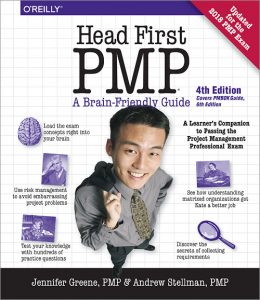
- Head First PMP is a brain-friendly book to study for PMP Certification
- It has a unique way of representing a concept in pictorial form
- It makes use of an innovative multi-sensory approach to learn the PMP content
- This book uses simple language which is easy to understand
- It offers a visual format to help you grasp the big picture of project management
- This book is based on a variety of graphics and visual learning instead of heavy text approach
- You will find a lot of visual aids to understand the content
- Also, they have used concepts, pictures, exercises, games, and fun examples with emotional content to make brain remember more appropriately
- High quality of instructional design that provides easy learning
- A unique feature of multiple learning styles
- Besides, they provide memory joggers, hints, tips and tricks for attempting PMP Certification questions.
- The author has written making use of illustrations, case studies which makes it fun to read.
4- PMP Study Guide by Kim Heldman
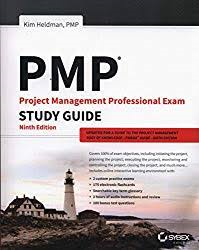
- This book is one of the best selling books for project managers but not for PMP certification preparation
- It is different from others in a way that most books follow the PMBOK Guide structure and are organized knowledge area but Kim Heldman has written Process Group-wise.
- This book gives complete coverage of topics written in the PMBOK Guide but also the arranging of the chapters is different.
- Each chapter of the book starts with a brief introduction of the topics and processes covered in the chapter
- Even though the book focuses on exam preparation, it also provides holistic learning of project management
- You will find “Real World Scenarios” at many places which provides a complete understanding of the topic
- The book is written in a conversational manner
- It is very easy to read even for a novice project manager
- The language of the book is easy to understand
- However, there are very few figures, tables, and diagrams which makes sometimes difficult to interpret the written word.
- Another advantage of buying this book is to get access to Sybex interactive online learning environment
- On the downside, there are very few questions at the end of each chapter
5- Andy Crowe
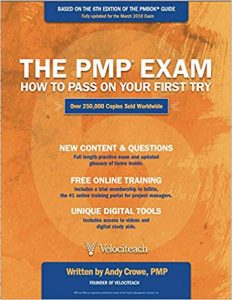
- This book is named as “Complete Study Guide for PMP Certification Exam”.
- It provides all the information project managers need to thoroughly prepare for and pass the test
- This book is clearly organized and presents the material in an easily understandable format
- It gives a clear explanation of all the concepts, processes, input, tools and techniques, output.
- It gives a link to 60 videos of Andy explaining the concepts
- You will find over 400 practice exam questions which include end of chapter quizzes and a simulated exam
- Andy Crowe book offers insider secrets, tips and tricks to prepare for PMP certification
- Meaningful exercises to strengthen mastery of key concepts
- Inside the book, they have given provision to write study notes
- One week subscription to Insite, Velociteach PMP’s e-learning portal with additional content like an extra 100 simulated practice exam questions
Can I Prepare for PMP Certification Online?
Yes, of course, you can prepare for PMP certification online. In fact, the classroom training was the traditional approach. These days, due to busy schedule and workload, candidates want to learn at their own pace. They want to balance work and personal life. Likewise, to prepare for the PMP exam, they need the flexibility to spare their time to prepare for PMP certification.
There are many benefits listed below:
- Online trainings are more flexible as compared to classroom training. You can learn at your own pace and can choose your timing and location to attend the training.
- They are cheaper in regards to price. Hence they are cost-effective.
- Online courses ensure high-quality content
- Moreover, it gives you the benefit to go through the content as many times as you wish to.
- Also, you can spend more time or less time to attend a specific lesson on the training course. This means you have flexibility in time to spend on training and get ample time to understand the content and grasp the information.
How Much Can I Earn After I Get PMP Certification?
PMP certified professionals earn 20% more than their noncertified peers. Not only, this is a high paying job but also, PMP certification gives more opportunities for growth, more flexibility, and better job security. If you look at the 2017 survey in the US market, PMP certified professional salary is $119.3K if you compare it with a non certified professional who earns $99.1 K.
Even if you look for salaries of PMP certified professionals at glassdoor.com, it ranges from $118K -$174K in the United States.
How Should I Choose PMP Certification Training?
Generally, PMP certification training is conducted in 3 modes:
- Classroom training: This is a traditional physical classroom training where you need to be available as per the timings of class and instructor. It gives the benefit of face to face interaction with the trainer. But it doesn’t give the flexibility to learn at your own pace. The disadvantage is that you have to give up your office work or put extra hours after the office to attend the training which might not be a preferred option for working professionals.
- Self-paced online learning where you can attend training at your own pace, location, and timings. Hence this has the utmost flexibility to manage your time and attend the training.
- Instructor-led virtual PMP certification training: This is similar to classroom training but it gives the flexibility to attend training from any location be it your office, home, etc. The disadvantage is that you have to be available as per the instructor’s time slot availability which is not convenient for working professionals. They have to juggle in office work and training.
Hence when making a choice for the best training provider, look for a few points like reliability, whether contact hours are recognized by PMI. Besides, go through the student’s testimonials to determine the pros and cons of the training providers. Further, check for refund guarantee, quality of the content in feedbacks and online reviews. Last but not least, the course should be cost-effective.
You can read our Top 10 PMP Training post to see all PMP training options and ratings.
What Are the PMP Certification Knowledge Areas?
Processes are grouped by Process Groups or Knowledge Areas. PMBOK is the main reference book for PMP Certification preparation. It is organized by knowledge areas to make you understand the specific area in depth. Hence in order to prepare for PMP certification, one needs to understand knowledge areas in detail.
Knowledge areas are the identified areas of project management and they are defined by their knowledge requirements. They are described in terms of their component processes, practices, inputs, outputs, tools, and techniques.
Knowledge areas are interrelated but they are defined separately from the project management perspective.
PMBOK Guide has identified 10 knowledge areas. These 10 knowledge areas are used in most projects most of the time.
10 Knowledge areas in the PMBOK Guide are:
1. Project Integration Management
This knowledge area concerns with coordinating all aspects of the project plan. It is highly interactive. This involves identifying and defining the work of the project and combining, unifying, and integrating the appropriate processes. Besides, it also takes into account satisfactorily meeting the requirements of the customer and stakeholders and also managing their expectations.
Project planning, project execution, project work monitoring, and change control occur throughout the project and are repeated continuously while you are working on the project. Monitoring the work of the project involves anticipating potential problems and issues and dealing with them before they reach a critical point. Change control affects the project plan which in turn affects the work of the project, which in turn can affect the project management plan so you can see that these processes are tightly linked. The processes in this area also interact with other processes in the remaining knowledge areas.
It includes 7 processes:
- Develop Project Charter
- Develop Project Management Plan
- Direct and Manage Project work
- Manage Project Knowledge
- Monitor and Control Project work
- Perform Integrated Change control
- Close Project or Phase
2. Project Scope Management
This knowledge area concerns with defining all the work of the project and only the work needed to successfully produce the project goals. These processes are highly interactive. They clarify and control what is part of the project and what is not. Each process happens at least once and generally many times throughout the project’s life.
Project Scope Management covers both product scope and project scope. Product scope is related to the characteristics of the product, service or result of the project. It is measured against the product requirements to determine successful completion or fulfilment. The application area usually dictates the process tools and techniques you will use to define and manage the product scope. The project scope involves managing the work of the project and only the work of the project. Project scope is measured against the project management plan, the project scope statement, the work breakdown structure (WBS) and WBS dictionary.
It includes 6 processes which are:
- Plan Scope Management
- Collect Requirements
- Define Scope
- Create WBS
- Validate Scope
- Control Scope
3. Project Schedule Management
The third knowledge area is about estimating the duration of the project plan activities, devising a project schedule, monitoring and controlling deviations from the schedule. Collectively this knowledge area deals with completing the project in a timely manner. Time management is an important aspect of project management because it is about keeping the project activities on track and monitoring those activities against the project plan in order to ensure that the project is completed on time. Each process in this knowledge area happens at least once in every project and sometimes more. In many cases, particularly on small projects, Sequence Activities, Estimate activity duration and Develop Schedule are completed as one activity. In a small project, only one person is needed to complete these processes and they are all worked on at the same time.
It involves 6 Processes which are:
- Plan Schedule Management
- Define Activities
- Sequence Activities
- Estimate Activity Durations
- Develop Schedule
- Control Schedule
4. Project Cost Management
This knowledge area concerns with cost and budgets. The activities in this knowledge area set up cost estimates for resources, establish budgets and keep watch over those costs to ensure that the project stays within the approved budget. Project Cost Management knowledge area primarily concerns with the costs of resources. It also includes ongoing maintenance and support cost for software considered for the project. Depending upon the complexity of the project, these processes might need the involvement of more than one person. On small projects especially of smaller scope, cost estimating and cost budgeting are tightly linked. You can view it as a single process that a single person can perform over a relatively short period of time.
It involves 4 processes which are:
- Plan Cost Management
- Estimate Costs
- Determine Budget
- Control Costs
5. Project Quality Management
This knowledge area concerns with assuring that the project meets the requirements that it was undertaken to produce. It focuses on product quality as well on the quality of the project management processes used during the project. The processes of the Project Quality Management measure overall performance and monitor project results and compare them to the quality standards set out in the project planning process to ensure that the customers will receive the product, service or result they commissioned. It also supports continuous process improvement activities as undertaken on behalf of the performing organization.
It involves 3 processes which are:
- Plan Quality Management
- Manage Quality
- Control Quality
6. Project Resource Management
This knowledge area concerns all aspects of project management and personal interaction including leading, coaching, dealing with conflict, conducting performance appraisals and more. The processes of Project Resource Management ensure that the human resources allocated to the project are used in the most effective way possible. Each stakeholder requires the use of different communication styles, leadership skills, and team-building skills. A good project manager knows when to enact certain skills and communication styles based on the situation. The processes in this knowledge area ensure that the right resources will be available to the project manager and project team at the right time and place.
There is a distinction between the skills and competencies needed for the project manager to manage team resources versus physical resources. Here physical resources include equipment, materials, facilities, and infrastructure. And Team resources or personnel refer to human resources. Personnel may have varied skillsets and may be assigned full or part-time and may be added or removed from the project team as the project progresses.
It involves 6 processes which are:
- Plan Resource Management
- Estimate Activity Resources
- Acquire Resources
- Develop Team
- Manage Team
- Control Resources
7. Project Communications Management
The Project Communications Management knowledge area concerns with general communication skills, but they encompass much more than an exchange of information. Communication skills are considered general management skills that the project manager uses every day. The purpose of the processes in this knowledge area is to guarantee that all project information including project plans, risk assessments, meeting notes etc is collected, documented, archived and disposed of at the proper time. These processes also ensure that information is distributed and shared with stakeholders, management and project members at appropriate times.
When the project is closed, the information is archived and used as a reference for future projects. This is referred to as historical information in several project processes. Everyone on the project has some involvement with this knowledge area because all project members will send and receive project communication throughout the life of the project. It is important that all team members and stakeholders understand how communication affects the project.
Project Communications Management consists of 2 parts. The first part is developing a strategy to ensure that communication is effective for stakeholders. The second part is implementing the activities necessary to fulfil the communication strategy
It involves 3 processes which are:
- Plan Communications Management
- Manage Communications
- Monitor Communications
8. Project Risk Management
This knowledge area concerns identifying, analyzing and planning for potential risks, both positive and negative that might impact the project. This means minimizing the probability and impact of negative risks while maximizing the probability and impact of positive risks. These processes are also used to identify the positive consequences of risks and exploit them to improve project objectives or discover efficiencies that might improve project performance. Always remember that risk includes both threats to and opportunities within the project. At times, organizations combine several of these processes into one step. The important aspect of the Project Risk Management Knowledge area is to strive to identify all the risks and develop responses for those with the greatest consequences to the project objectives.
Risk exists at 2 levels within every project. It is important to consider the riskiness of the overall project which arises from the combination of individual project risks and other sources of uncertainty. Processes in these knowledge areas address both levels of risks in projects. Individual project risk can have a positive or negative effect on project objectives if they occur. Unmanaged threats may have results such as delay, cost overruns, performance shortfall, or loss of reputation. Opportunities that are captured can lead to benefits such as reduced cost and time, improved performance or reputation. Management of overall project risk intends to keep project risk exposure within an acceptable range by reducing drivers of negative variation, promoting drivers of positive variation and maximizing the probability of achieving all project objectives.
It involves 7 processes which are:
- Plan Risk Management
- Identify Risks
- Perform Qualitative Risk Analysis
- Perform Quantitative Risk Analysis
- Plan Risk Responses
- Implement Risk Responses
- Monitor Risks
9. Project Procurement Management
This knowledge area concerns with processes involved with purchasing goods or services from vendors, contractors, suppliers, and others outside the project team. Also, it contains the management and control processes required to develop and administer agreements such as contracts, purchase orders, memoranda of agreements (MOA) or internal service level agreements (SLA). This process involves agreements that describe the relationship between 2 parties – a buyer and a seller.
For smaller organizations or start-up companies and those without a purchasing, contracting or procurement department, the project managers may assume the purchasing authority role to negotiate and sign contracts directly. For mature organizations, the actual procurement and contracting functions will be carried out by a separate department with the specific role to purchase, negotiate and sign contracts.
The project managers not only need to be involved along the way but also they should assist the procurement department with project input, they must also plan the amount of time that the procurements will take. The procurement process follows from start to finish. Processes define how procurement management works on a properly managed project and how it relates to the project life cycle and the project management process.
It involves 3 processes which are:
- Plan Procurement Management
- Conduct Procurements
- Control Procurements

10. Project Stakeholder Management
This knowledge area concerns identifying all stakeholders, analyzing their power, interest, and level of engagement, elicit their requirements and expectations and then evaluate and incorporate all of that information into product and project scope. Every project has stakeholders who are affected by or can affect the project in a positive or negative way. Some stakeholders may have a limited ability to influence the project work or outcomes. Others may have a significant influence on the project and its expected outcomes.
Always remember that engaging stakeholders should take place throughout the life of the project. In other words, you need to build and maintain positive relationships with stakeholders. Also, make sure that they continue to be involved in the project at a level necessary to make a success. Processes in this knowledge area support the work of the project team to analyze stakeholder expectations, assess the degree to which they impact or are impacted by the project. They develop strategies to effectively engage stakeholders in support of project decisions and the planning and execution of the work of the project. The skills of the project manager and team to correctly identify and engage all the stakeholders in a suitable way can mean the difference between project success and failure.
It involves 4 processes which are:
- Identify Stakeholders
- Plan Stakeholder Engagement
- Manage Stakeholder Engagement
- Monitor Stakeholder Engagement
What Are the PMP Certification Exam Formulas?
One of the areas to focus while preparing for PMP certification is PMP formulas. They are really significant to pass the PMP certification exam. You may find a number of simple and direct questions based on PMP formulas in the exam. Hence it is necessary to understand these formulas to have a good hold on scoring in the PMP certification exam.
I am going to list below most important PMP formulas categorized by knowledge area:
Integration Management
Economic Measures for Project Selection
Economic measures use a comparative approach. Organizations consider these factors when selecting a project.
-
Internal Rate of Return (IRR):
This is the amount of money project that will return to the company that is funding it. It is how much money a project is making for the company? Generally, it is expressed as a percentage of funding that has been allocated to it.
For instance, if a company has 2 projects i.e. Project A with 12% IRR and Project B with 10% IRR, in which it can invest. The company will select project with the highest IRR. Hence answer is Project A.
-
Present Value (PV):
This means the value today of future cash flows. It can be calculated by this formula:
PV = FV/ (1+r) raised to n
-
Net Present Value (NPV):
This is the actual value at a given time of the project minus all of the costs associated with it. In other words, NPV is the present value of total benefits (income) minus the costs over many time periods.
Always remember, if NPV is positive, the investment is a good choice. Hence, choose a project with greatest NPV.
For instance, the organization has 2 projects i.e. Project A with 3 years to complete and has NPV of $40,000. Project B will take 5 years to complete and has an NPV of $75,000. Which out of the above is a better investment, the company should make in?
The answer is Project B. Note that the number of years is not relevant as it has been considered while calculating NPV
-
Payback Period:
This refers to the length of time it takes for the organization to recover its investment in a project before it starts accumulating profit.
For instance, there are 2 projects i.e. Project A with a payback period of 5 months. And, Project B with a payback period of 15 months. Which out of the above will the organization select?
The answer is Project A. Point here to remember is the one should choose the project with a shorter payback period.
-
Cost-Benefit Analysis:
This refers to a comparison of the expected costs of a project to the potential benefit it could bring to the organization.
Here if the benefit-cost ratio i.e. BCR is greater than 1, it means the benefit is greater than costs
And if the benefit-cost ratio is less than 1, it means costs are greater than benefits.
If the benefit-cost ratio is equal to 1, it means costs and benefits are equal.
Note that if the benefit is higher than the cost, the project is a good investment.
For instance, to choose a project out of 2 projects with different BCR values. Always choose project with higher BCR.
-
Opportunity Cost:
This refers to the money you don’t get because you chose not to do a project. It is like when an organization has to make choice between 2 projects, it is always giving up the money it would not work on. In other words, it refers to the opportunity given up by selecting one project over another.
For instance, an organization has 2 projects i.e. Project A with NPV of $50,000, Project B with NPV of $90,000. What is the opportunity cost of selecting project B?
The answer is $50,000 because the opportunity cost is the value of the project not selected.
-
Sunk Cost:
This refers to expended costs. Accounting standards say that don’t consider sunk cost when deciding whether to continue with a troubled project.
For instance, an organization has a project with an initial budget of $2,000,000. The project is half complete. And it has spent $3,000,000. Now at this stage, they are already $1,000,000 over budget. Should the organization consider the fact that it is already over budget when determining whether to continue with the project?
The answer is no; they shouldn’t consider this money as money spent is gone.
Schedule Management
-
Three-Point Estimating:
This calculates a risk-based expected duration estimate for an activity by taking a simple average or weighted average of 3 estimates. Time and cost estimates use this formula
Standard Deviation =(P-O)/6 where P is a pessimistic estimate and O is an optimistic estimate of activity
Simple average: Another name is triangular distribution. Formula to calculate is (P+M+0)/3
Weighted average: Another name is beta distribution. Formula to calculate is (P+4M+0)/6 where P is a pessimistic estimate, O is an optimistic estimate and M is a most likely estimate of each activity
-
Float:
Generally, they use Float for schedule flexibility. It is the amount of time an activity or project can be delayed without delaying the project end date or early start date of the successor activity
Formula to calculate float is LS-ES or LF-EF Where LS is the late start of an activity, ES is early start of an activity
And LF is late finish of an activity and EF is early finish of an activity.
Cost Management
-
Earned Value Measurement:
This is used in performance reviews to measure project performance against the scope, schedule and cost baselines. The earned value uses a combination of these three baselines known as performance measurement baseline.
Here are a few terms used in the following formulas:
- Planned Value is PV. It refers to as of today, what is the estimated value of the work planned to be done?
PV= BAC* Planned% complete where Planned% complete =Given Amount/Total amount
- Earned Value is EV. It refers to as of today, what is the estimated value of the work actually accomplished?
EV= BAC*Actual% complete where Actual% complete=Actual Amount/Total Amount
- Actual Cost is AC. It refers to as of today, what is the actual cost incurred for the work accomplished?
- Budget at completion is BAC. It refers to, how much did we budget for the total project effort?
- Estimate at Completion is EAC. It refers to, what do we currently expect the total project to cost?
- Estimate to Complete is ETC. It refers to, from this point on, how much more do we expect it to cost to finish the project?
- Variance at Completion is VAC. It refers to, as of today, how much over or under budget do we expect to be at the end of the project?
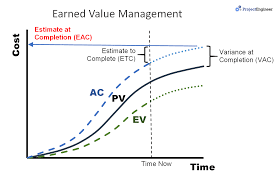
If you are in a small project, it is easy to figure out whether you are on track. But, in a large project, when many people are doing lots of different activities. Some of the activities are on track, some are ahead of schedule and some of them are behind schedule. Hence if you want to track whether you are meeting the goal or not, the following formulas will help you to determine the same.
If you want to know whether you are ahead of or behind schedule then
Schedule Performance Index (SPI) =EV/PV. This means if SPI is greater than 1 that means EV is bigger than PV so you are ahead of schedule. If SPI is less than 1 then you are behind schedule because the amount you have actually worked (EV) is less than what you had planned (PV)
Now if you want to know how much ahead or behind schedule you are, subtract PV from EV.
Schedule Variance (SV) = EV-PV. This means if the variance is positive that means it is ahead of schedule. Besides, it tells you exactly how many dollars you are ahead. If variance is negative that means it is behind schedule. Also, it tells you how many dollars you are behind.
If you want to know whether you are over or under budget then
Cost Performance Index (CPI) =EV/AC. This means we are getting $ worth of work out of every $1 spent. Here ratio greater than 1 is good and less than 1 is bad.
If you want to know how much under or over the budget you are then
Cost Variance (CV) =EV-AC. This means the difference between what you planned on spending and what you actually spent. Here if the variance is negative, that means that it is over budget. If the variance is positive, that means it is under budget.
Remember that you are within your budget if CPI is greater than or equal to 1 and CV is positive. This means that your actual costs are less than the earned value which means the project is delivering more value than it costs.
And you have blown your budget if CPI is less than 1 and CV is negative. This means that your actual costs are more than the earned value.
In other words, your sponsor is not getting his money worth of value from the project.
Forecasting
The idea behind forecasting is that you can use earned value to come up with a pretty accurate prediction of what your project will look at completion.
Here you need your CPI to predict what your project will actually cost when it is complete.
-
Estimate at completion (EAC)
It means as of now, how much do we expect the total project to cost
There are different formulas based on various situations:
Case 1: They use this formula when the original estimate was fundamentally flawed
EAC= AC+bottom up ETC where AC is actual cost and ETC is revised estimate for all the remaining work.
Case 2: They use this formula if no variances from BAC have occurred or you will continue at the same rate of spending
EAC= BAC/CPI where CPI refers to cumulative CPI
Case 3: They use this formula when current variances are thought to be atypical of the future
EAC= AC+ (BAC-EV)
Case 4: They use this formula when current variances are thought to be typical of the future and when project schedule constraints will influence the completion of the remaining effort.
EAC= AC+ (BAC-EV)/ (CPI *SPI)
-
Estimate to Complete (ETC)
It refers to, how much more will the project cost? Or how much money the rest of the project will end up costing.
ETC = EAC-AC
-
Variance at Completion (VAC)
It refers to, how much over or under budget will be at the end of the project?
VAC= BAC-EAC. Here, VAC will be negative if you end up spending more than your budget. And it will be positive if you spend less than your budget.
Points to remember for Earned value PMP questions
- EV comes first in each of the formulas
- If it is a variance then formula is EV minus AC or PV
- And, if it is an index then formula is EV divided by AC or PV
- If formula relates to cost, use AC
- If formula relates to schedule, use PV
- For interpretation of variances, a negative value is bad and a positive value is good.
- For interpretation of indexes of CPI and SPI, greater than 1 is good and less than 1 is bad
- And for TCPI, greater than 1 is bad and less than 1 is good.
Communications Management
To Calculate no of communication channels, we use the formula n*(n-1)/2 where n is the number of stakeholders
Procurement Management
Point of Total assumption (PTA): This only relates to fixed-price incentive fee contracts. And this refers to the amount above which the seller bears all the loss of a cost overrun.
The formula for PTA = (Ceiling price –Target price)/Buyer’s share ratio + Target cost
Where the ceiling price is the highest price the buyer will pay. Buyer setting the ceiling price is a way to encourage the seller to control costs. The ceiling price is a condition of the contract that both parties must agree to before signing.
How Should I Study for the PMP Exam?
There is not a single way to prepare for the PMP certification exam. Generally PMP certification training providers, internet blogs give assurance that you will pass the exam in the first try if you follow their study plan. But the success depends on many factors such as background, domain knowledge, experience in project management and institute from where you have attended training, etc. The first and foremost step in PMP Preparation is to have a robust PMP Certification Study Plan. It will guide you to prepare for the PMP exam.
Based on my experience, I am listing a study plan which can be helpful to aspirants preparing for the PMP certification exam
7-Step PMP Certification Study Plan:
- Check the PMP certification requirement whether you are eligible to appear for the PMP certification exam. Check your project management experience and you must have attended 35 hours of project management education to get 35 contact hours from a training institute.
- Set the target date to appear for the PMP certification exam. If you are a working professional, then you can plan for 3-4 months. If you can put 3-4 hours each day for studying else you can increase duration based on the time you can devote to study or prepare for the exam.
- Read the PMBOK Guide along with one reference book i.e. Rita Mulcahy or Headfirst or any other good book.
- The next step is while going through the material, start noting down the notes which will help you in the last weeks of preparation when you will have less time to go through the entire material again.
- Further, once you have understood the subject and content, then practice is the key to pass the exam. Practice as much as you can. Try to choose questions bank from different sources or practice multiple PMP certification simulators to get the feel of the real exam.
- After you have practiced questions, don’t forget to go over the incorrect answers. Figure out where you went wrong and go through the knowledge areas pertaining to those answers to understand the concept. And then practice again those questions to see whether this time they turn out to be correct or not. This way it will strengthen your weak areas and reduce the risk of selecting the wrong answer in the actual PMP certification exam.
- Once you start scoring 80% and above in 4-5 PMP simulation exams that mean you are ready to appear for the PMP certification exam.
Should I Use PMP Question Bank?
PMP aspirants or professionals have different ways to prepare for the PMP certification exam depending upon the time, budget, and other work responsibilities. Generally, training providers and test-takers recommend practicing a lot of questions. Now either you can make use of question banks or PMP exam simulator. PMP question banks are books or PDFs which contain a large number of question database but in a plain simple format. Whereas a PMP exam simulator is a test engine program that allows an individual to practice tests that are similar in content, style as the actual exam.
Benefits of studying with a PMP exam simulator are:
- They familiarize you with an environment similar to the actual PMP certification exam.
- A simulator will accustom you to how exam features and functions will let you focus more on questions. Thus it will make you more comfortable with the user interface of the PMP certification exam.
- It helps you to keep track of your time management for the PMP certification exam
- It gives the aspirant the complete feel of the PMP certification exam
- Besides, users get instant feedback of answers they attempt correctly or not
- Moreover, it highlights the areas of weakness you need to put additional efforts on and areas of strength in which you excel.
- Major aspect is that you will get to know how to pace yourself to answer 200 questions in 4 hours. Hence, it will increase the probability of passing the exam.
- Last but not least, it will improve your confidence level with each sample exam you practice.
How Can I Earn PMP PDUs?
PDUS is a term for the Professional Development Unit. Generally, people confuse PDUS and contact hours.
If you are an individual who is preparing for PMP certification then you need to attend 35 hours of training from a recognized training institute. Afterward, they give you the certificate of 35 hours of training as 35 Contact hours. This is one of prerequisite to apply for PMP certification
Now suppose you are already a PMP certified professional then as part of the PMP renewal process, you need to earn 60 PDUS every 3 years to retain your PMP certification. After December 2015 CCR changes, it has become easy and flexible to earn PDUS.
You can choose them as per your interests and professional needs. PMI CCR process says that you need to earn at least 35 PDUS under Education Category. Here PDUS earned under the education category is mapped with three dimensions of the Talent Triangle.
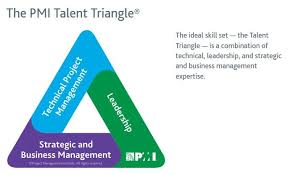
Actually they are referring to the skills important to be successful in project management. For instance:
- If learning activities for the PDUS belong to process, tools and techniques in aligning the project with strategic goals then you to map them in the “Strategic” category
- If learning activities for the PDUS belong to Team Development which will help in achieving the project goal then you need to map them in the “Leadership” category
- And if learning activities for PDUS belong to PMP content outline tasks, and then you need to map them in the “Technical” category.
Point to remember here is that you can earn 1 PDU for each hour you spend in learnings related to PDUS earning.
There are several easy and popular ways to earn PDUS in 2 categories (Education and Giving Back) as mentioned below.
Sources for earning PDUS for Education Category are:
1. Courses or Training: This is one of the traditional methods of attending any training related to project management from a recognized training institute.
- Registered education providers (REPs) regularly organizes different programs or trainings to earn PDUS.
- Face-to-face instructor-led courses from the PMI seminars world.
- PMI local chapter conducts 2-3 days of Seminars and Conferences. They are chargeable.
2. Reading Books: Another way is to read books. If you have a passion for reading, you need to make a reading list in the area of project management, leadership, and strategic business management. In fact, you can earn a large number of PDUS in the ‘Read’ Category. This is the favorite category for book lovers who love to enhance the skills by reading books.
3. Organization Meetings: This is another source to attend meetings, activities and local events related to the profession which gives the opportunity to network and earn PDUS. Here, you can earn 1-2 PDUs in sessions related to the talent triangle component.
4. Informal Learning: Engage yourself in structured professional discussions with a team or different projects. For example Mentoring sessions, Brainstorming sessions or lunch and learn sessions.
Sources for earning PDUS for Giving Back Category are:
1. Working as a practitioner: If you are working as a professional in project management, and actively working on a project. Then you are contributing to this profession by applying your knowledge and skills. As a result, you can earn a maximum of 8 PDUs.
2. Creating Content: Do you have a passion for writing and have an interest in writing blogs and articles? If yes then you can write on project management or create content on project management and can earn PDUS.
3. Giving Presentation: Are you a good speaker and present some topics at seminars or conferences? If yes, then you can give a presentation on project management topics or best practices or emerging trends and can earn PDUs.
4. Sharing Knowledge: You can earn PDUS by attending knowledge sharing sessions with your team or peers.
5. Volunteering: Do you like contributing to social good as a volunteer? If yes, then the PMI chapter presents such opportunities from time to time. And based on your experience and number of hours you can devote, they screen your profile. Once they shortlist you then you can contribute and earn PDUS
6. Watching videos: There are many videos online or different forms of digital media for self-learning
7. Listening to Podcasts: Moreover, you can listen to podcasts where each PDU represents 60 minutes of learning. Hence for podcasts that are under an hour, just listen to a couple on the same topic and consolidate them.
8. Attending Webinars: PMI also conducts webinars that you can avail of if you are a PMI member. Trainers and training providers also conduct free webinars where you can earn 1-2 PDUS
When should I start earning PDUS?
You can start as soon as you attain your PMP certificate.
Can we transfer PDUS to the next cycle?
Yes, of course. If you have earned more than 60 PDUS then you can claim them in your next 3-year cycle. But PDUS, earned during the first 2 years of the 3-year cycle cannot be applied to the next cycle.
When is the Next PMP Certification Exam Date?
As such, there is no fixed schedule for the PMP certification exam. For the current version of the PMP certification exam, the last day for candidates to take is 30 June 2020. Hence the key is whenever you are ready for the exam, you can schedule your exam and sit for the exam.
What is the PMP Certification Exam Passing Score?
In the past, PMI published 61% as the passing score for the PMP certification exam (which means PMP aspirants need to correctly answer 106 or more out of 175 real questions). But now, PMI does not state any official score. They have adopted a more scientific approach by giving proficiency level (Proficient, Moderately Proficient and Below Proficient) or Target level (Above Target, Target, Below Target). PMI doesn’t state any information about the PMP certification exam passing score. They determine the score through sound psychometric analysis.
What Are the Benefits of PMP Certification?
There are different benefits of becoming PMP certified, not merely from your career point of view. But also for personality development; it boosts both your ability and confidence as well.
1. Career Growth
Many well-established organizations look for PMP certified professionals. Hence, clearing the PMP Certification exam will surely offer better career prospects. Becoming PMP certified improves your professional network. The more extensive your network in the PM field, the better for your career growth.
2. Boost your salary
PMP Certification provides an excellent advantage when it comes to earning potential. So being a PMP certified professional gives you an immediate edge over your counterparts when it comes to salary levels.
3. Industry Independent
PMP certified managers are not limited to one industry. Industries across various sectors seek competent professionals to ensure that projects are implemented productively.
4. Greater Responsibilities
PMP Credentials increase your knowledge, competency, and skills. As a certified PMP, you will have to manage large projects and satisfy multiple stakeholders. Handling such responsibilities will benefit you vastly. Because the experience you gain will help you identify early on any problems of a project from initiation to completion
5. Improved Career Opportunities
Being a certified PMP paves the way for better career opportunities as there is a massive demand for skilled project managers in various sectors. Thus certified PMPs get preference over non-certified project managers in the job market
6. Upgrades your leadership skills
It is the core responsibility of the project manager to bring all members of a team together as a single entity. They are accountable for identifying the strengths and weaknesses of the team to accomplish the project. Furthermore, they provide you an opportunity to acquire various leadership skills that vary based on project requirements.
7. Enhances Risk Management Skills
PMP Certification gives you knowledge of advanced risk management skills to identify and assess the probable risks and ways to mitigate the same. Having this skill is an added advantage as it safeguards organizational interests. This, in turn, increases product quality to a top-notch level which is beneficial for you as a PM, the team and organization too.
8.Enhances Problem Solving skills
Attaining PMP certification is proof of your proficiency in the domain. People will approach you for expert advice. They will trust you with your problem-solving skills, imaginative solutions and innovative approaches that ensure project success
9. Enhances People Orientation and Team Work
The primary responsibility of the project manager is to manage the team competently and lead it to attain all business objectives. Teamwork is a significant factor that determines the success or failure of the project. Hence, being a PMP certified project manager, you will be considered the main force behind successful project completion
10. Challenging projects
PMP Certification comes not only with more responsibilities but challenges too. When you are a certified PMP, projects that require greater effort and commitment to achieve business goals will fall into your lap.
11. Common Language
PMP certification makes everyone speak a common language within the project management field which makes communication more effective among peers

How can I Renew PMP Certification?
PMP certified individual needs to earn 60 PDUS in a 3-year cycle to renew the PMP certification.
Steps to renew the PMP certification are:
- The first step is to earn 60 PDUs to meet the Continuing Certification Requirements (CCR) for your certification.
- Afterward, you should enter PDUS in the online CCR system by entering the Provider name, Activity name, Activity Dates and number of PDUS claimed under 3 components of the Talent triangle. And click on the ‘Submit’ button. Thereafter you will receive an update on the number of PDUS accepted or rejected.
- Then you have to fill the online renewal application by mentioning contact information along with payment details before submission
- Next step is to agree to the code of ethics by PMI
- Then the next step is to pay the renewal fee. Here if you are a PMI member, then you need to pay a discounted fee of 60USD. But if you are not a PMI member then you need to pay 150 USD for PMP certification renewal.
The Final Step
Once you have earned 60 PDUS then there is no need to wait for 3 years to complete. You can pay the fees and renew your certification. Nonetheless, PMI will renew the PMP certification date from the date of expiry only not from the date of payment of fees.
The final step is to receive the confirmation from PMI. And you will receive a certificate indicating a new CCR cycle. Next to your profile, your status is “Active” and “PMP in good standing”. In other words, once you have completed a single cycle, then a new 3-year cycle begins.
Let’s suppose that you are not able to complete your renewal within the completion of the CCR Cycle because you do not earn the specified amount of PDUs by the end of the third year of PMP certification. Then, you will be under the “Suspended” status up to 1 year after the CCR cycle. And further, it will no longer be valid.
What Changes in the PMP Certification Exam and When?
Every 3-5 years, PMI is conducting research on changing trends, the progress of profession, implications, etc. Hence it results in a new PMP exam content online.
Further, SME’s across the globe work with PMI to come up with a new PMP examination content outline on June 19. Thereafter 1 year later, this new outline will lead to an updated PMP exam.
Hence the last date to take the current version of the PMP exam is 30 June 2020.
A new PMP examination content outline was published on 30th June 19. This document defines the content of the PMP certification exam.
Changes in new content are:
The current PMP certification exam is based on 5 performance domains. But exams starting from 1st July 2020 will be based on 3 domains. PMP Exam Content Outline defines these domains in detail.
| Domain | Current 2015 | New 2019 |
| 1 | Initiating | People |
| 2 | Planning | Process |
| 3 | Executing | Business Environment |
| 4 | Monitoring & Controlling | |
| 5 | Closing |
New PMP exam will require candidates to have experience in and answer questions from 3 domains:
- People (42%)
- Process (50%)
- Business Environment (8%)
PMI also clearly declares that about half of the exam will contain predictive project management approaches whereas the other half will contain agile or hybrid approaches.
Now the questions arise whether PMBOK Guide is going to change?
The answer is No. Currently, the PMP certification exam uses the PMBOK Guide 6th edition as a reference book. We do not expect a new version i.e. 7th edition until 2023. Hence, the PMBOK Guide is not changing. And, we will use the PMBOK 6th edition as an exam reference till 2023. As a result, no matter if you are planning to appear for the PMP certification exam before or after 1st July 2020, you have to use PMBOK Guide 6th edition as your reference.
Conclusion
PMP Certification is the most renowned and recognized certification across the globe in project management. PMBOK along with one supporting book is sufficient to prepare for the exam. The exam content keeps on changing every 3-5 years. PMP Certification exam is going to change after 1st July 2020.
As for the benefits, a PMP certified individual garner a 20% higher salary than a non-certified individual. One can attend different modes of training depending upon the suitability. But the most preferred one is online training due to numerous benefits of cost-effectiveness, the flexibility of learning at own pace and location. Moreover, it is beneficial to become a PMI member and then appear for the PMP certification exam as it saves money and gives the additional benefit of networking, access to numerous resources, etc. To earn PDUS, choose an effective, reliable, high-quality content training provider who gives a 100% refund guarantee and high pass percentage rate.

